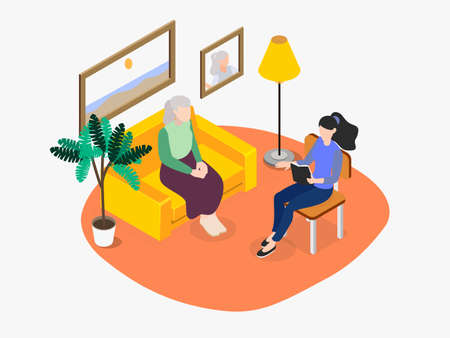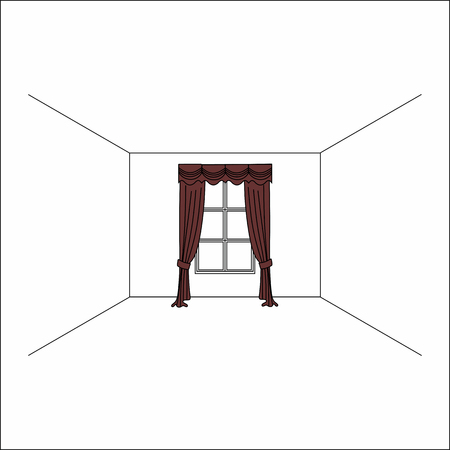Introduction to Heritage Colours and British Interior Design
Heritage colours hold a special place in the heart of British interior design, shaping the atmosphere of countless homes and public buildings across the UK. But what exactly are ‘heritage colours’? In essence, these shades are inspired by historical palettes that were prevalent during key periods of British architectural and decorative history—ranging from the soft, earthy tones of Georgian townhouses to the deep, opulent hues found in Victorian parlours. Rooted in centuries-old pigment recipes and traditional techniques, heritage colours have endured through generations, finding new relevance in modern British interiors. Their lasting popularity is not simply about nostalgia; it’s also about evoking a sense of authenticity, comfort, and connection to Britain’s rich cultural past. By incorporating these classic tones, homeowners and designers alike pay homage to tradition while imbuing spaces with a timeless elegance that continues to resonate today.
2. The Psychological Influence of Colour in Living Spaces
Colour is far more than a decorative afterthought; it is a subtle yet powerful force that shapes our perception, influences our emotions, and even guides our behaviours within interior spaces. In the context of British heritage interiors, these effects are particularly pronounced, as the palette draws from centuries of tradition, local landscape, and cultural resonance. Understanding how heritage colours interact with human psychology can help create environments that feel both meaningful and harmonious.
The Emotional Resonance of Heritage Colours
Colours found in traditional British interiors—think deep forest greens, muted ochres, gentle stony greys, and rich burgundies—each carry distinct psychological associations. These hues often evoke a sense of stability, nostalgia, and comfort. The use of such shades in living spaces can foster feelings of safety and reassurance, echoing the enduring qualities of historic homes throughout the UK.
How Colour Impacts Mood and Behaviour
Specific colours can elicit a wide range of responses. For example, sage green might promote tranquillity and focus, making it ideal for studies or reading nooks. Conversely, warm terracottas or oxblood reds may encourage conviviality and warmth in dining areas or drawing rooms. Below is a simple table highlighting common heritage colours and their psychological effects:
| Heritage Colour | Psychological Effect | Ideal Room Application |
|---|---|---|
| Sage Green | Calmness, Restoration | Study, Bedroom |
| Burgundy | Warmth, Intimacy | Dining Room, Lounge |
| Pewter Grey | Stability, Sophistication | Hallway, Living Room |
| Ochre Yellow | Optimism, Cheerfulness | Kitchen, Breakfast Room |
| Navy Blue | Focus, Serenity | Library, Bathroom |
A Tailored Approach to Wellbeing at Home
The careful selection of heritage-inspired palettes allows designers to curate spaces that align with the desired mood and function of each room. In Britain’s often changeable climate, colour becomes an essential tool for counterbalancing grey skies or enhancing natural light. By understanding these psychological impacts, one can create interiors that not only honour tradition but also nurture everyday wellbeing.

3. Historical Meaning and Symbolism of British Heritage Colours
British heritage colours are not merely aesthetic choices; they are steeped in history, cultural identity, and symbolism that have evolved over centuries. Iconic palettes, such as those from Farrow & Ball, draw inspiration from stately homes, historic estates, and traditional architecture across the UK. These hues—think Drawing Room Blue, Setting Plaster, or Calke Green—each tell a story rooted in Britain’s social and architectural narrative.
During the Georgian era, muted blues and subtle greys dominated interiors, reflecting a desire for understated elegance and rationality. In contrast, the Victorian period embraced deeper reds, olives, and ochres—tones symbolic of luxury, prosperity, and the British Empire’s global reach. Edwardian tastes swung back to lighter sage greens and dusty pinks, echoing the optimism and freshness of a new age.
The continued popularity of these shades is anchored in their psychological resonance. For instance, deep greens such as Farrow & Ball’s ‘Green Smoke’ are reminiscent of library walls or country house studies—spaces designed for contemplation and intellectual pursuits. Rich reds evoke warmth and conviviality found in classic English dining rooms or public houses.
Symbolically, these colours go beyond surface appeal. Blue denotes trustworthiness and calm—a reflection of Britain’s maritime heritage. Earthy tones like ochre and umber connect us to the natural landscape of the English countryside. Soft neutrals speak to restraint, orderliness, and timelessness that underpin British interior design sensibilities.
Understanding the origins and meanings behind these heritage tones allows designers and homeowners alike to curate interiors that resonate emotionally while honouring the past. By choosing palettes informed by history, one fosters a sense of continuity—a bridge between eras that grounds modern living spaces in rich British tradition.
4. Case Studies: Emotional Resonance in Heritage-Inspired Spaces
To truly appreciate the psychological impact of heritage colours in interior design, it is essential to observe how these palettes are woven into real-life British homes and public spaces. Across both urban and rural settings, heritage-inspired colour schemes evoke emotional responses that connect individuals to their environment and history. Below, we explore several case studies that illustrate this profound connection.
Urban Townhouse: Victorian Palette Revived
In central London, a renovated Victorian townhouse showcases the power of a deep, muted heritage palette. The owners opted for rich forest greens and dusky blues—colours historically associated with late-19th-century interiors. These shades were paired with original woodwork and ornate plaster details. Residents reported feeling cocooned and comforted, describing the space as “grounding” and reminiscent of a bygone era. The use of these colours fostered a sense of belonging amidst the city’s fast-paced environment.
Cotswolds Cottage: Embracing Rural Warmth
A countryside retreat in the Cotswolds demonstrates how earthy tones like ochre, sage green, and soft clay pink can root inhabitants in local tradition. By restoring original lime-washed walls and beams, designers created an atmosphere that was both calming and intimately connected to the landscape. The owners expressed increased relaxation and nostalgia, as the palette mirrored the region’s rolling fields and historic stonework.
Community Library: Bridging Past and Present
In a restored Edwardian library in Manchester, designers selected a palette inspired by archival paint charts—warm burgundy, deep olive, and creamy buff. The intent was to create a welcoming space that honoured civic heritage while inviting modern use. Visitors frequently remark on the sense of comfort and communal pride experienced within these walls.
Emotional Responses by Setting
| Setting | Heritage Colours Used | Emotional Impact |
|---|---|---|
| Urban Townhouse (London) | Forest Green, Dusky Blue | Comfort, Security, Nostalgia |
| Cotswolds Cottage | Sage Green, Ochre, Clay Pink | Relaxation, Connection to Nature, Warmth |
| Edwardian Library (Manchester) | Burgundy, Olive, Buff | Pride, Belonging, Calmness |
The Power of Place-Specific Palettes
The emotional resonance observed in these case studies highlights how heritage colours do more than beautify—they restore identity and memory within a space. Whether in the hustle of metropolitan life or the tranquillity of rural villages, thoughtfully applied traditional palettes help individuals feel at home while honouring Britain’s rich cultural legacy.
5. Practical Guidance: Incorporating Heritage Colours into Modern British Interiors
Introducing British heritage colours into your home can be a joyful, transformative process—one that pays homage to history while feeling refreshingly current. Here are some easy, actionable steps for layering these time-honoured hues into contemporary British spaces, ensuring both balance and the preservation of character.
Start with a Thoughtful Palette
Begin by selecting a core palette inspired by classic British heritage shades—think deep forest greens, muted ochres, rich burgundies, or the iconic ‘Railings’ blue-black. Choose one or two dominant tones as your base, complemented by softer neutrals or gentle pastels to avoid overwhelming the space.
Balance Old with New
To keep interiors feeling fresh rather than museum-like, layer heritage colours with modern elements. For example, pair traditional wall colours with sleek, contemporary furniture or minimalist lighting. This contrast not only highlights the depth of the heritage hues but also ensures the space feels lived-in and relevant.
Layering for Depth and Warmth
Use a combination of paint, textiles, and accessories to create visual interest. Velvet cushions in Georgian red or William Morris-inspired wallpapers can add subtle nods to history without dominating. Layering different textures and finishes—such as matte walls with glossy ceramics—amplifies the richness of heritage colours and invites tactile engagement.
Preserve Architectural Character
If your home features original period details—cornicing, fireplaces, or sash windows—use heritage colours to highlight these features. Painting skirting boards or mouldings in a contrasting tone draws attention to craftsmanship and adds authenticity. Even in newer builds, introducing panelling or traditional detailing painted in heritage shades can evoke a sense of timelessness.
Small Touches Make Big Impact
If you’re hesitant about bold colour, start small: an accent wall in ‘Hague Blue’, a front door in ‘Pigeon’, or antique brass hardware against ‘Setting Plaster’ walls. These touches provide character without commitment and can be easily updated as tastes evolve.
By mindfully balancing rich British heritage colourways with modern design cues, you can craft interiors that feel both storied and inviting—a true reflection of contemporary British living steeped in tradition.
6. Conclusion: The Enduring Appeal of Heritage Colours in the British Home
Heritage colours have an undeniably enduring presence within British interiors, transcending fleeting trends to become emblems of national character and personal identity. Their continued popularity speaks volumes about the collective psyche of British society—a culture that values continuity, comfort, and a subtle nod to the past even as it embraces modernity. These rich, storied hues connect homeowners with a sense of place and belonging, grounding contemporary lives in the reassuring embrace of tradition.
The psychological impact of heritage colours lies not only in their ability to evoke calm and familiarity but also in their power to instil pride and individuality. By weaving history into the fabric of everyday spaces, these palettes encourage a mindful approach to home design—one that honours the past while expressing personal taste and well-being. They reflect a uniquely British attitude towards space: respectful of origins, yet unafraid to reinterpret and revitalise classic schemes for today’s lifestyles.
In essence, heritage colours continue to captivate because they offer more than visual appeal—they provide emotional resonance and cultural continuity. Their use is a gentle assertion that our homes are sanctuaries shaped by memory, aspiration, and the enduring charm of tradition. As we navigate an ever-changing world, it is perhaps this very connection—to history, to place, and to oneself—that makes heritage colours an everlasting favourite in British interior design.


